Abstract
Lymphocytes from hepatoma bearing rats are cytotoxic for cells of the corresponding hepatoma and this reactivity can be specifically blocked by pretreating target cells with tumour bearer serum. This blocking activity is unlikely to be mediated by circulating tumour specific antibody, since none is detectable by cytotoxic assay in these sera. In contrast, serum from tumour immune rats is cytotoxic for plated hepatoma cells, but in the absence of complement these sera block lymphocyte cytotoxicity, findings which suggest that blocking by humoral antibody may not be a significant factor in modifying tumour growth. It has also been established that immune complexes prepared by adding hepatoma immune serum to solubilized tumour specific antigen can block target hepatoma cells from lymphocyte attack and this is probably the mechanism of blocking by tumour bearer serum. More significantly, lymph node cell cytotoxicity is specifically inhibited following incubation with tumour bearer serum. Similar lymphocyte inhibition is obtained by pretreating effector cells with solubilized hepatoma specific antigen. This suggests that the activity of tumour bearer serum may be effected by circulating tumour antigen or immune complexes and in support of this, there is evidence for these factors in the sera studied. These investigations indicate that inhibition of lymphocyte reactivity by tumour bearer serum is of a complex nature, but probably the most relevant with regard to in vivo immune responses is the tumour-antigen mediated inhibition of lymphocyte reactivity.
Full text
PDF
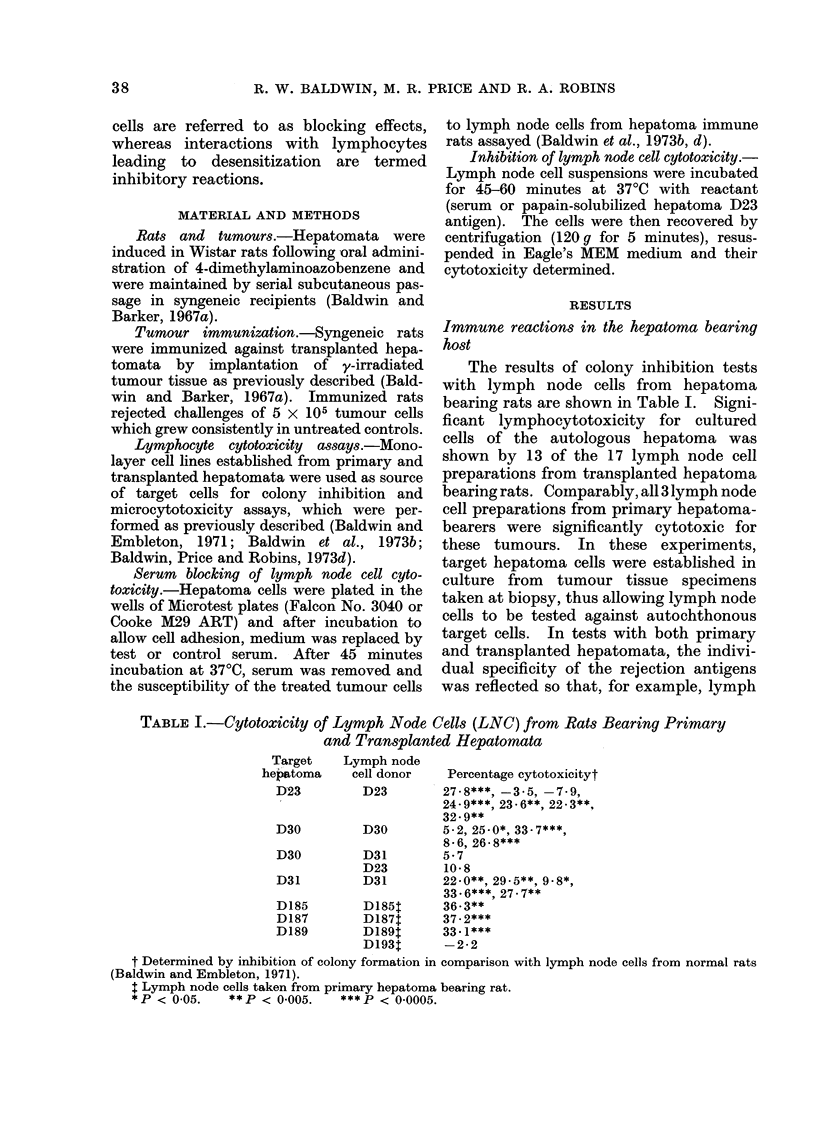
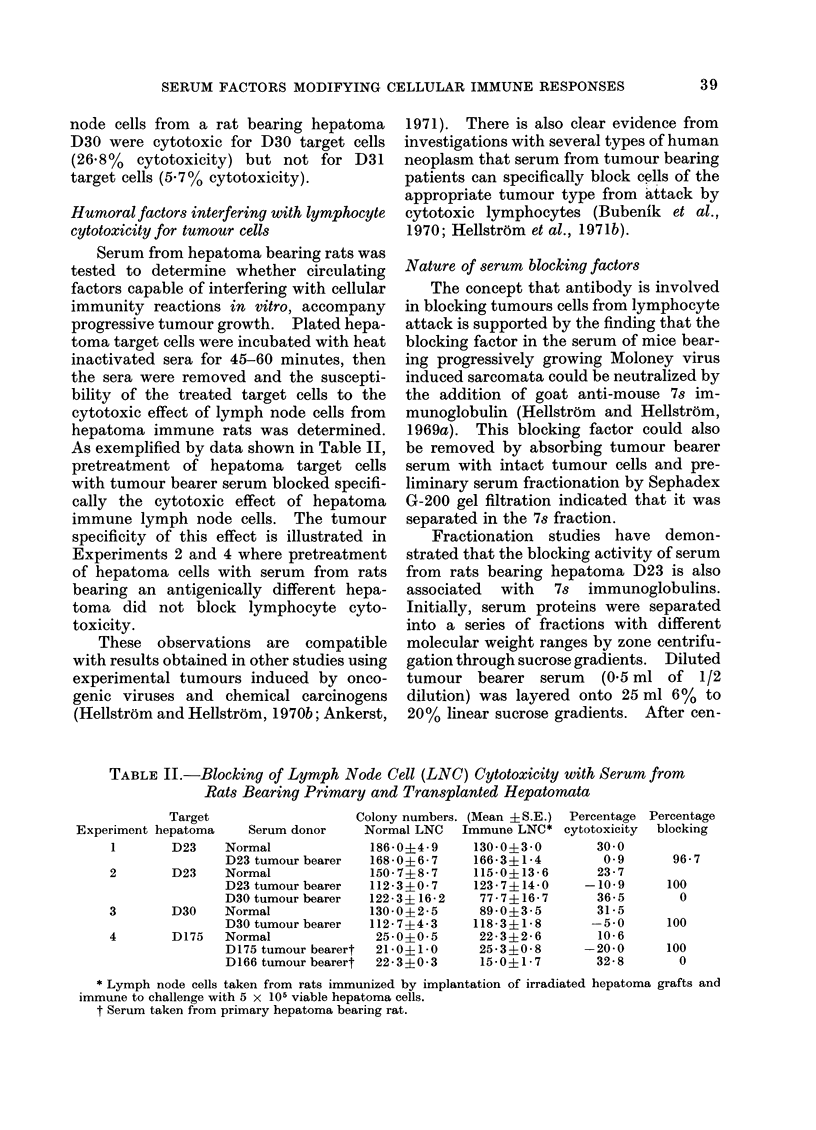
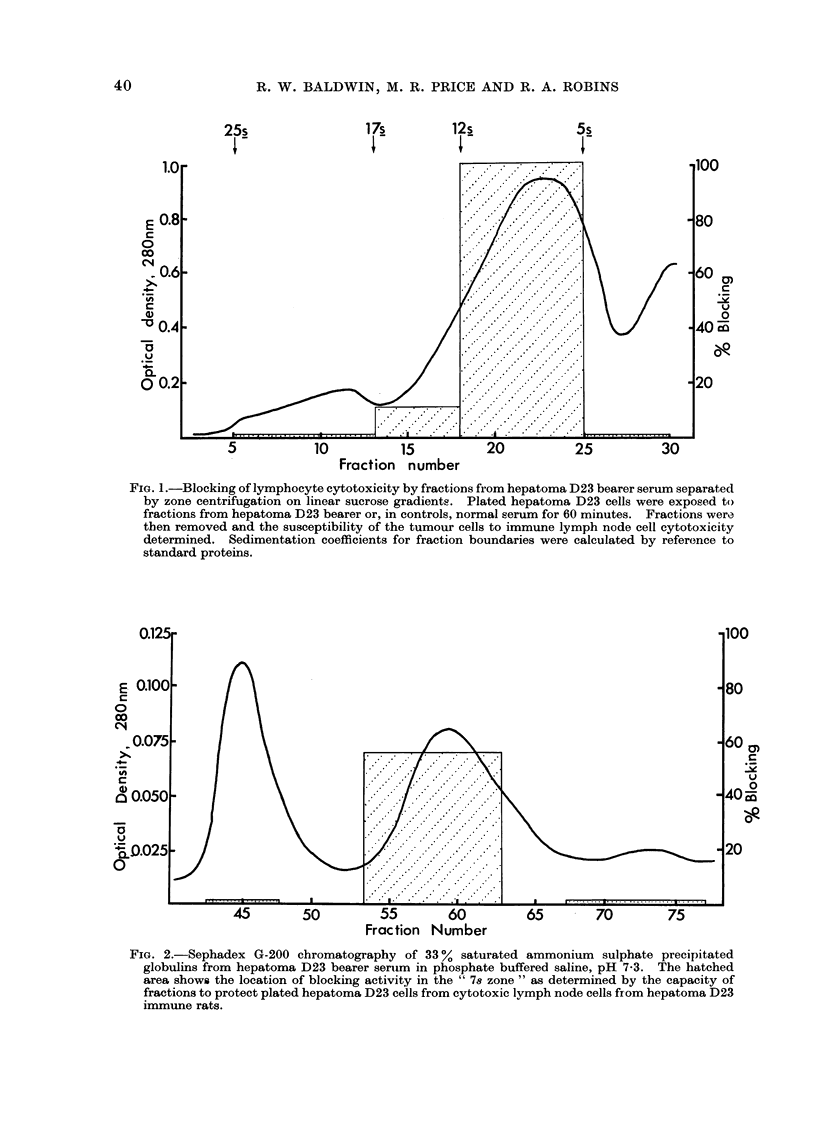
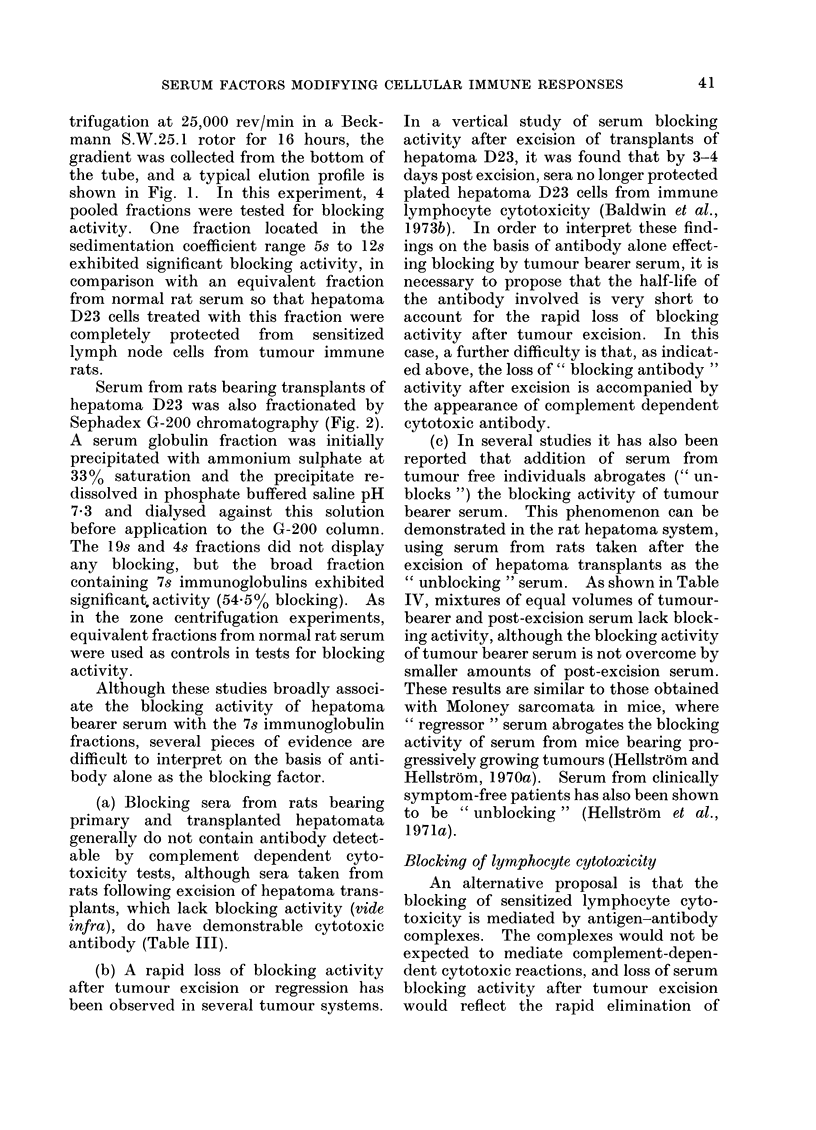
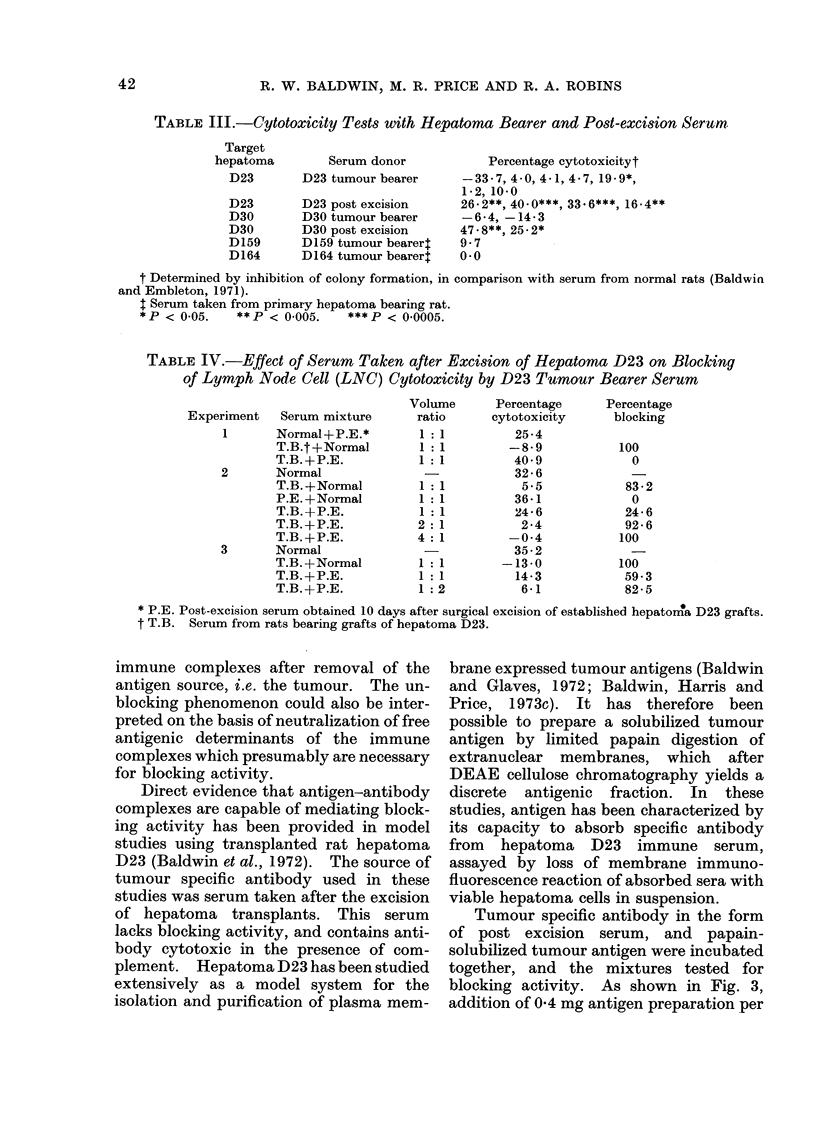

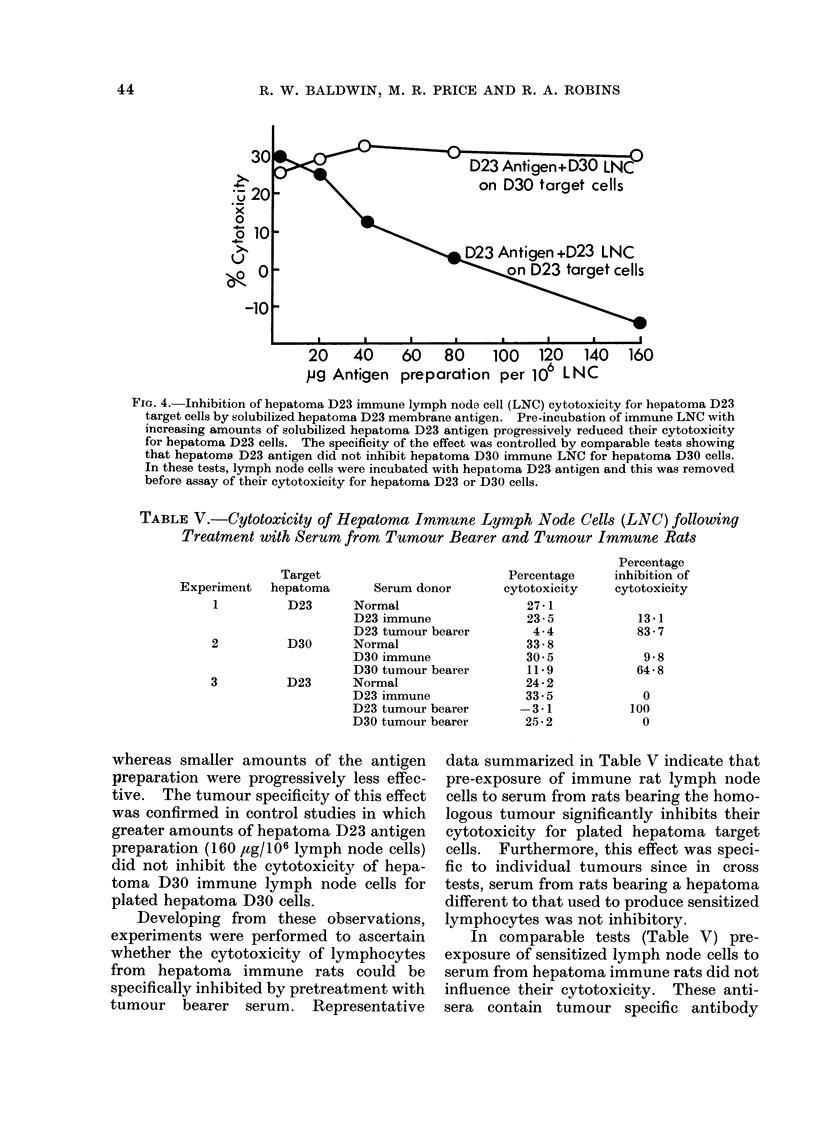
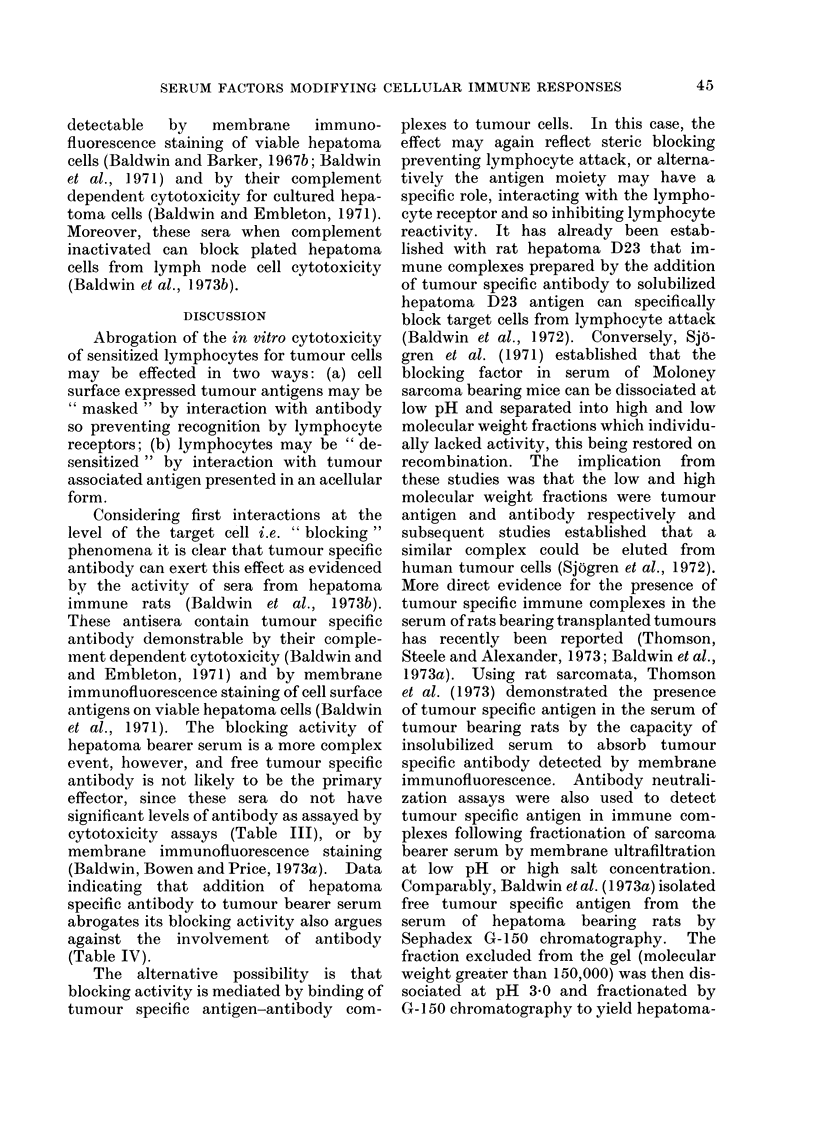
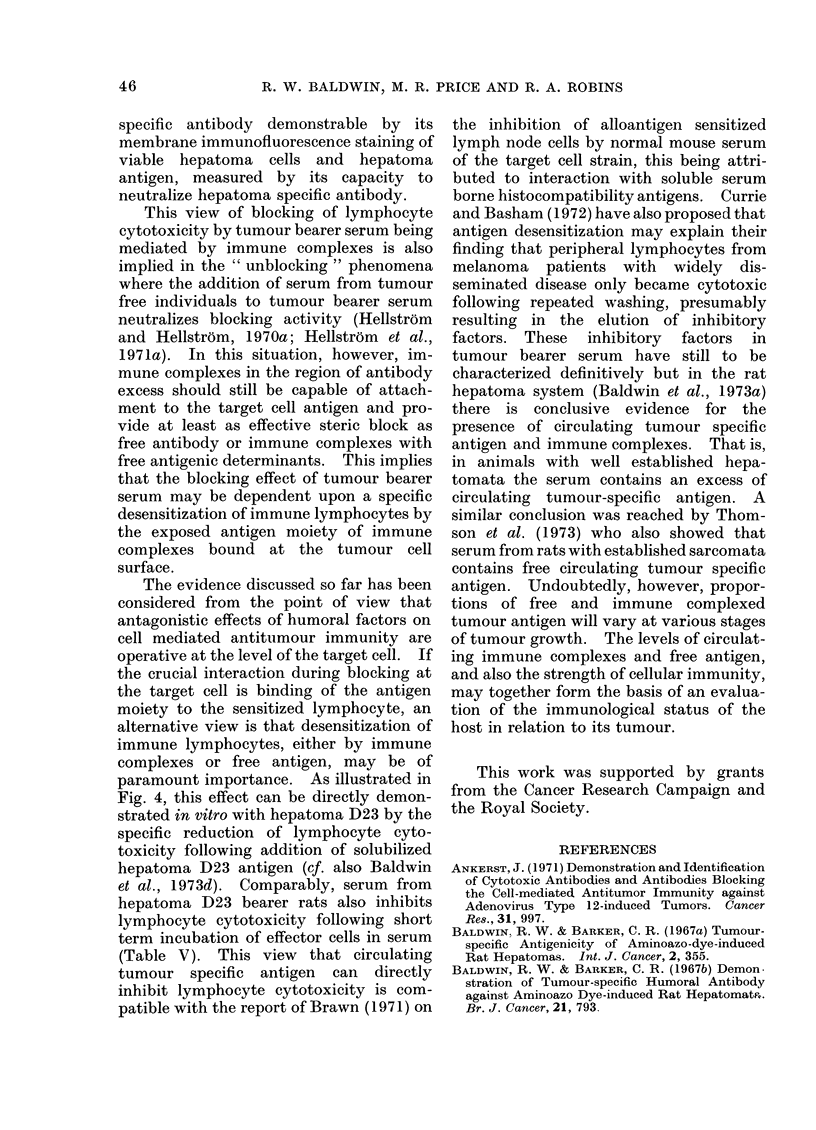
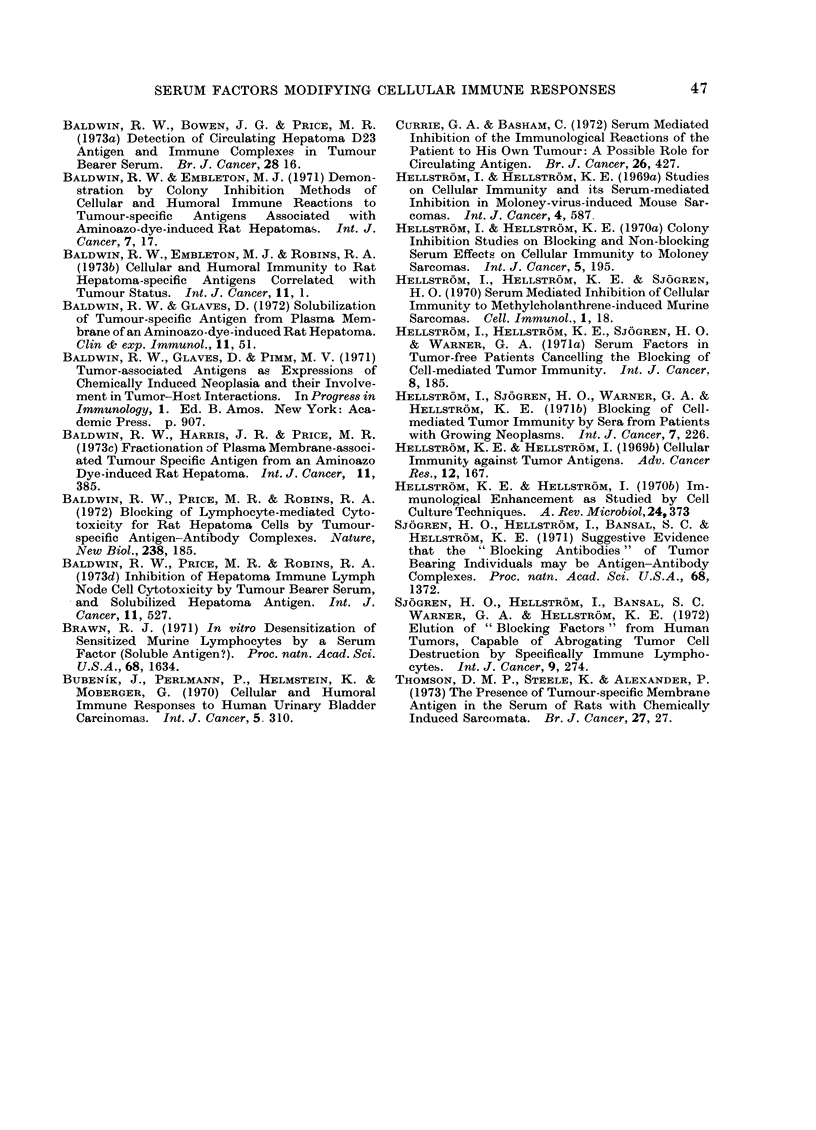
Selected References
These references are in PubMed. This may not be the complete list of references from this article.
- Ankerst J. Demonstration and identification of cytotoxic antibodies and antibodies blocking the cell-mediated antitumor immunity against adenovirus type 12-induced tumors. Cancer Res. 1971 Jul;31(7):997–1003. [PubMed] [Google Scholar]
- Baldwin R. W., Barker C. R. Demonstration of tumour-specific humoral antibody against aminoazo dye-induced rat hepatomata. Br J Cancer. 1967 Dec;21(4):793–800. doi: 10.1038/bjc.1967.93. [DOI] [PMC free article] [PubMed] [Google Scholar]
- Baldwin R. W., Barker C. R. Tumour-specific antigenicity of aminoazo-dye-induced rat hepatomas. Int J Cancer. 1967 Jul 15;2(4):355–364. doi: 10.1002/ijc.2910020410. [DOI] [PubMed] [Google Scholar]
- Baldwin R. W., Embleton M. J. Demonstration by colony inhibition methods of cellular and humoral immune reactions to tumour-specific antigens associated with aminoazo-dye-induced rat hepatomas. Int J Cancer. 1971 Jan 15;7(1):17–25. doi: 10.1002/ijc.2910070103. [DOI] [PubMed] [Google Scholar]
- Baldwin R. W., Embleton M. J., Robins R. A. Cellular and humoral immunity to rat hepatoma-specific antigens correlated with tumour status. Int J Cancer. 1973 Jan 15;11(1):1–10. doi: 10.1002/ijc.2910110102. [DOI] [PubMed] [Google Scholar]
- Baldwin R. W., Glaves D. Solubilization of tumour-specific antigen from plasma membrane of an aminoazo-dye-induced rat hepatoma. Clin Exp Immunol. 1972 May;11(1):51–56. [PMC free article] [PubMed] [Google Scholar]
- Baldwin R. W., Harris J. R., Price M. R. Fractionation of plasma membrane-associated tumor-specific antigen from an aminoazo dye-induced rat hepatoma. Int J Cancer. 1973 Mar 15;11(2):385–397. doi: 10.1002/ijc.2910110216. [DOI] [PubMed] [Google Scholar]
- Baldwin R. W., Price M. R., Robins R. A. Blocking of lymphocyte-mediated cytotoxicity for rat hepatoma cells by tumour-specific antigen-antibody complexes. Nat New Biol. 1972 Aug 9;238(84):185–186. doi: 10.1038/newbio238185a0. [DOI] [PubMed] [Google Scholar]
- Brawn R. J. In vitro desensitization of sensitized murine lymphocytes by a serum factor (soluble antigen?). Proc Natl Acad Sci U S A. 1971 Jul;68(7):1634–1638. doi: 10.1073/pnas.68.7.1634. [DOI] [PMC free article] [PubMed] [Google Scholar]
- Bubeník J., Perlmann P., Helmstein K., Moberger G. Cellular and humoral immune responses to human urinary bladder carcinomas. Int J Cancer. 1970 May 15;5(3):310–319. doi: 10.1002/ijc.2910050303. [DOI] [PubMed] [Google Scholar]
- Currie G. A., Basham C. Serum mediated inhibition of the immunological reactions of the patient to his own tumour: a possible role for circulating antigen. Br J Cancer. 1972 Dec;26(6):427–438. doi: 10.1038/bjc.1972.59. [DOI] [PMC free article] [PubMed] [Google Scholar]
- Hellström I., Hellström K. E. Colony inhibition studies on blocking and non-blocking serum effects on cellular immunity to Moloney sarcomas. Int J Cancer. 1970 Mar 15;5(2):195–201. doi: 10.1002/ijc.2910050205. [DOI] [PubMed] [Google Scholar]
- Hellström I., Hellström K. E., Sjögren H. O. Serum mediated inhibition of cellular immunity to methylcholanthrene-induced murine sarcomas. Cell Immunol. 1970 May;1(1):18–30. doi: 10.1016/0008-8749(70)90058-4. [DOI] [PubMed] [Google Scholar]
- Hellström I., Hellström K. E., Sjögren H. O., Warner G. A. Serum factors in tumor-free patients cancelling the blocking of cell-mediated tumor immunity. Int J Cancer. 1971 Sep 15;8(2):185–191. doi: 10.1002/ijc.2910080202. [DOI] [PubMed] [Google Scholar]
- Hellström I., Hellström K. E. Studies on cellular immunity and its serum mediated inhibition in Moloney-virus-induced mouse sarcomas. Int J Cancer. 1969 Sep 15;4(5):587–600. doi: 10.1002/ijc.2910040503. [DOI] [PubMed] [Google Scholar]
- Hellström I., Sjögren H. O., Warner G., Hellström K. E. Blocking of cell-mediated tumor immunity by sera from patients with growing neoplasms. Int J Cancer. 1971 Mar 15;7(2):226–237. doi: 10.1002/ijc.2910070206. [DOI] [PubMed] [Google Scholar]
- Hellström K. E., Hellström I. Cellular immunity against tumor antigens. Adv Cancer Res. 1969;12:167–223. doi: 10.1016/s0065-230x(08)60331-0. [DOI] [PubMed] [Google Scholar]
- Hellström K. E., Hellström I. Immunological enhancement as studied by cell culture techniques. Annu Rev Microbiol. 1970;24:373–398. doi: 10.1146/annurev.mi.24.100170.002105. [DOI] [PubMed] [Google Scholar]
- Sjögren H. O., Hellström I., Bansal S. C., Hellström K. E. Suggestive evidence that the "blocking antibodies" of tumor-bearing individuals may be antigen--antibody complexes. Proc Natl Acad Sci U S A. 1971 Jun;68(6):1372–1375. doi: 10.1073/pnas.68.6.1372. [DOI] [PMC free article] [PubMed] [Google Scholar]
- Sjögren H. O., Hellström I., Bansal S. C., Warner G. A., Hellström K. E. Elution of "blocking factors" from human tumors, capable of abrogating tumor-cell destruction by specifically immune lymphocytes. Int J Cancer. 1972 Mar 15;9(2):274–283. doi: 10.1002/ijc.2910090205. [DOI] [PubMed] [Google Scholar]
- Thomson D. M., Steele K., Alexander P. The presence of tumour-specific membrane antigen in the serum of rats with chemically induced sarcomata. Br J Cancer. 1973 Jan;27(1):27–34. doi: 10.1038/bjc.1973.4. [DOI] [PMC free article] [PubMed] [Google Scholar]


